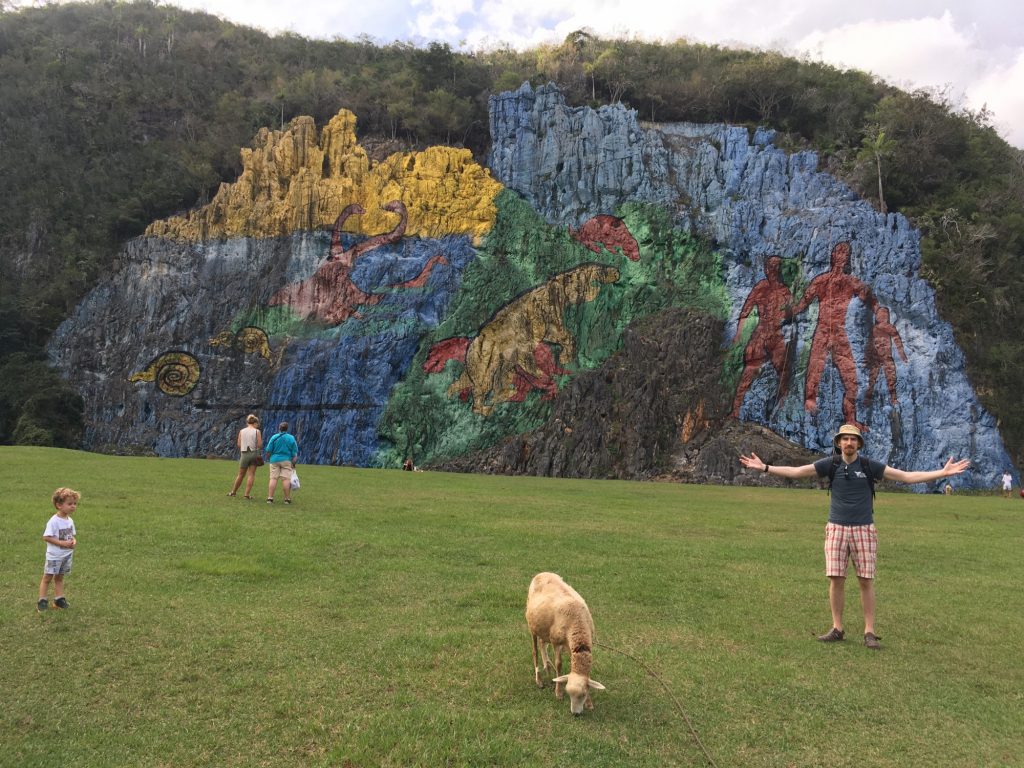
The 6 lane national Cuban highway stretches into the horizons. Considering it’s the main transit artery of the country, it’s almost empty of traffic. Gleaming white and blue tourist buses are our main companion on the fast lane, and the slow lane and shoulder are dominated much more frequently by horse-drawn buggies and elderly tractors. Low forested mountains are visible a few dozen kilometers to the north.
Our driver, Bernales is happy to chat with Christine about life in Cuba. I am able to join in for the early getting-to-know you chat (he has family in the USA, he likes our classic Harley Davidsons that come from Milwaukee, etc) but before a third of our three hour car ride is over and the high rises of Habana are in the rearview mirror, he and Christine have moved onto politics, radio, TV, and the economy and I’m able to catch far fewer words.
The climb through the aforementioned mountains is curvaceous and beautiful. Bernales’ car is a year old Russian Lada and has no problems with the journey, but several times on this mountain side road we are stuck behind diesel belching old trucks and (probably) diesel converted old Chevies and Plymouths. Some are stuck on the side of the road, their drivers diligently deep into the engine compartments.
But we arrive without issue in the picturesque town of Viñales, where every house is a tourist-friendly casa particular, and every restaurant (somehow) boasts free wifi, cheap cocktails, and happy hours that seem to extend through a quarter of the day. Private business and competition seems to be alive and well here.
The main draw of the region are their famed mountains, called mogotes, pocked and strangely rounded from beginning their life under the ocean. The soil is rich, red, and perfect for tobacco. We deposit our bags at our casa, hosted by an elderly lady named Nene, her family, and staff, and are immediately met by a jovial young guide named Jesus and his quiet neighbor who is only introduced as “Chino” due to his mixed Latin and Asian ancestry. Jesus lovingly pats the 1952 Chevy Belair and says, I sold it to Chino a few years ago to finance a new room in my house. The engine is still original, none of that diesel nonsense. Chino shows me the engine compartment; the gas line has been moved to pull from a 5 liter plastic tank right next to the air filter, as the original tank in the rear rusted through decades ago.
Our first stop is the Cave of the Indians, a short and Cuban-tourist filled boat ride through an ocean-carved cave that still has a natural freshwater spring and river running through it. No sign of cave paintings, but the 10 minute ride has several formations that look like animals, which the driver points out helpfully in English and Spanish. Jesus waits for us at the exit, snacking on off-brand saltines.
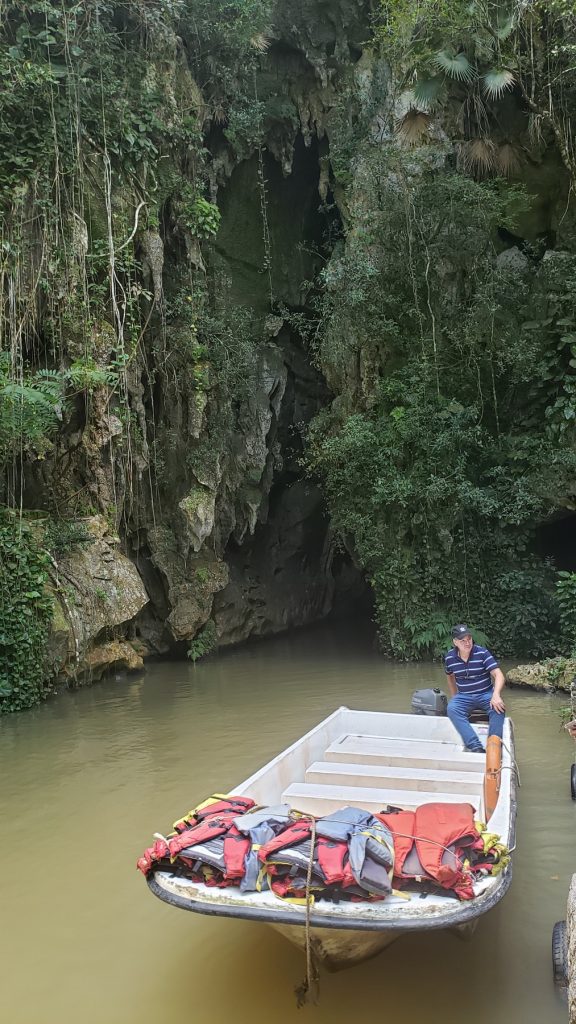
Another stop is to a massive, perhaps 50 meter high mural painted on the side of a mogote soon after the revolution by none other than Diego Rivera, husband of the equally famous Frida Kahlo on request of el Jefe. It depicts dinosaurs, an early mammal (we thought?) and a handsome couple of nude natives striding bravely forward. Come on, it’s Frido and Diego; of course they couldn’t resist the opportunity to paint some huge naked people. Jesus regretfully points out that of course we’re not seeing the original quality of the art; the rainy season hits Cuba hard, and there are rope lines strung along the mural showing where maintenance artists need to climb up and down and touch things up – tons of paint each year, Jesus says.
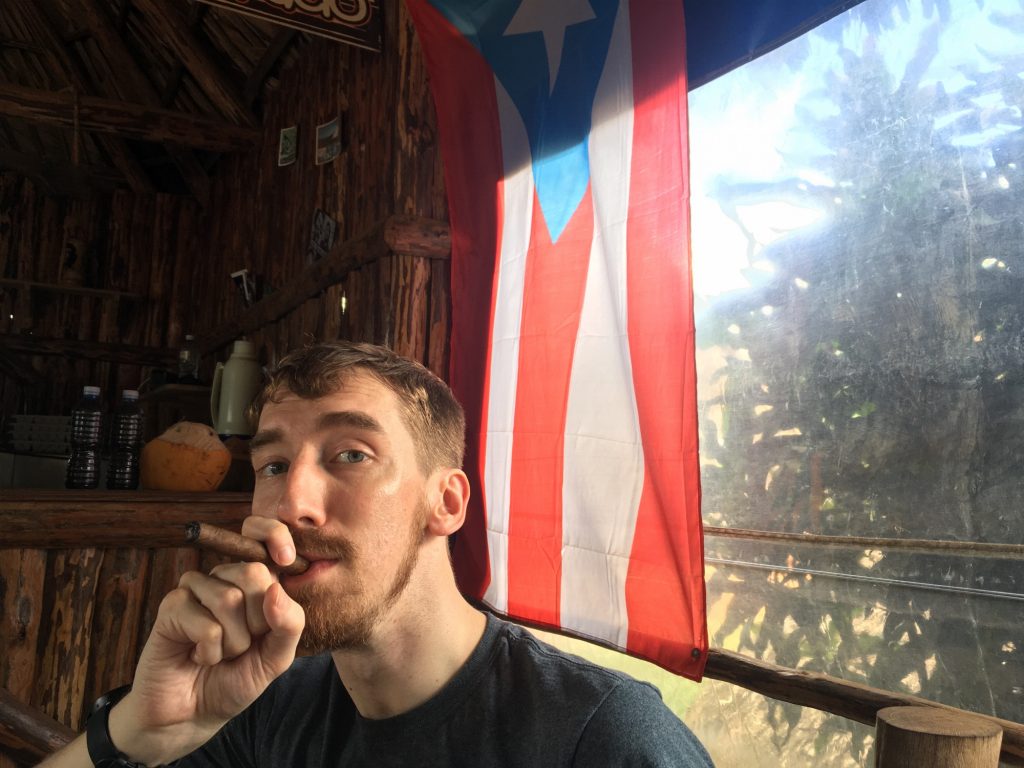
We agree our favorite stop is to Rancho de Arado, an organic tobacco plantation. A bearded young man named Miguel gathers a small group of tourists around his table, pours us little glasses of a local liqueur, and tells us in perfect English how he makes a cigar. From a pile of brown, pre-dried large leaves in front of him, he selects a single likely candidate, and tears out its central vein. These, he explains, are filled with nicotine and are given to the cigarette companies; a good cigar should not use them. Then using a rounded blade and a rocking motion, he slices the leaf into thin strips and sort of kneads those strips into a lose cylindrical pile. He then selects a lesser-grade leaf to serve as the casing, and with the same kneading, rolling motion, a slender cigar begins to take shape. He then carefully cuts a circle out of a third leaf that will serve as the cap for the cigar. “Technically, you can smoke a cigar from either end, but the capped end that you cut off is the correct place to inhale from, because if you burn the capped end, the cigar may start to unravel and the ashes will drop. A cheap, poorly made cigar is recognized by how quickly its ashes fall off its end.” He hands each of us a complementary cigar and introduces the finished product. “Right now, this cigar I’ve made is too moist, so I dry it a bit with a piece of paper around it for a few minutes, then seal it shut using honey, and it goes out in the sun for about fifty minutes. Then it’s ready.” Miguel says that since all farms are controlled by the government, 90% of the product is collected for distribution to the nationalized cigar-making facilities. But farms are allowed to keep the remaining 10% for sale however they wish, which we were now holding. We purchased a bundle of 10 cigars for 40 CUC, about the same in dollars, wrapped in a tough piece of palm frond and tied shut with a string of the same. “This shows that it was purchased from a local farm as part of the 10% extra,” he explains. “If you try to leave the country with cigars that either are missing an official company seal wrapped around them, or this palm leaf, customs may confiscate them as street-purchased counterfeits, in order to protect the reputation of their brands.” He reminded us that USA law allows for 100 cigars to be imported for personal use – we shouldn’t have a problem at all on the USA side of our return flight.
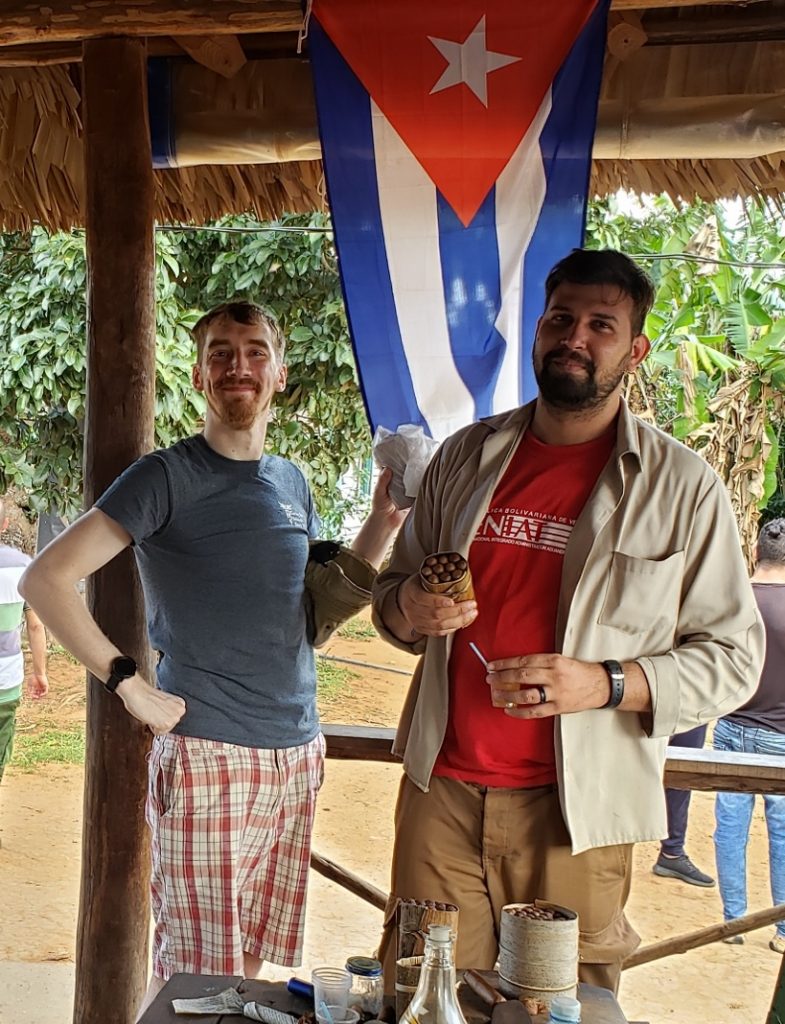
Jesus and Chino return us to Nene’s house and we set out to dinner and free wifi, in my case, the first internet I’ve had in four days as Christine and her iPhone have Tamara’s only sim card (and the personal hotspot functionality is disabled; I certainly tried that first). As the evening darkens, live music begins in a few of the small discos and restaurants. We listen to an energetic group of 5-6 young men with electric violins and upright basses, maracas, and guitars play Stand By Me, No Woman No Cry, and of course the ubiquitously Latin American “Despacito” – the writers/performers of which, I assume, are billionaires by this point, as I don’t think I’ve gone longer than 8 hours in a Spanish speaking country without hearing it. A crowd of locals and tourists gather outside the dimly lit club and dance semi drunkenly in the street, openly passing around a handle of Club Havana (drinking in the streets is completely legal in Cuba).
We fall asleep to the gentle squeaking of the ceiling fan in Nene’s guest room, crickets outside, and are awakened all to soon to early-rising roosters.
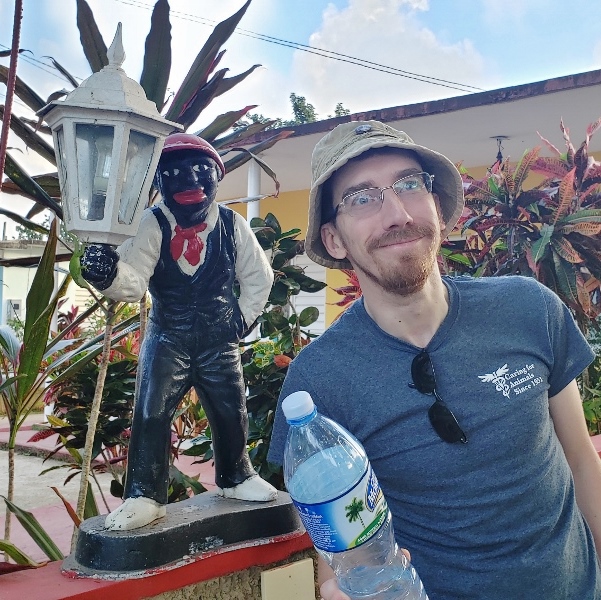


Excuse me Cuba, your decor is problematic.